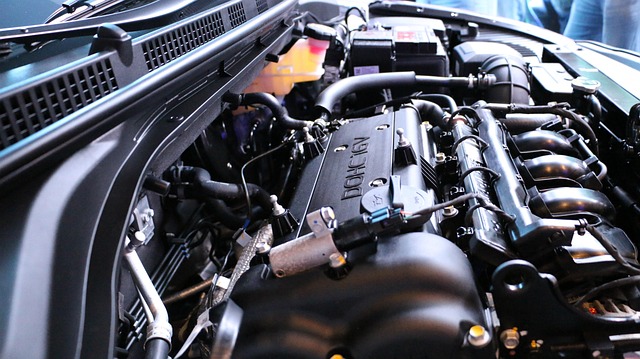Looking to register your car in California? This comprehensive guide breaks down the process step-by-step. From understanding key requirements to securing your license plate, we’ll walk you through each phase. First, familiarize yourself with California’s car registration mandates, then gather essential documents for a seamless DMV visit. Ensure accurate vehicle identification by verifying your VIN, complete the application, pay fees, and register your ride, receiving your unique license plate in due course.
- Understand California Car Registration Requirements
- Gather Necessary Documents for DMV Visit
- Perform Vehicle Identification Number (VIN) Verification
- Complete Application and Pay Fees at DMV
- Register Your Vehicle and Obtain License Plate
Understand California Car Registration Requirements

Before registering your car in California, it’s crucial to understand the state’s specific requirements. The California Department of Motor Vehicles (DMV) mandates several key steps for car registration, including a thorough vehicle inspection. One essential component of this process is the DMV vin verification, which ensures that the vehicle’s unique identification number (VIN) is accurate and matches the make, model, and year of the car.
Additionally, you may opt for a mobile vin verification or mobile vin inspection service to streamline the process. These services provide on-site assessments, allowing you to verify your car’s VIN without visiting a DMV office. This flexibility can save time and effort, especially if you’re registering a vehicle for the first time or have encountered issues with traditional inspection methods.
Gather Necessary Documents for DMV Visit

Before heading to the DMV, ensure you have all the essential documents for a smooth registration process. The California Department of Motor Vehicles (DMV) requires specific paperwork, including the vehicle’s title, proof of insurance, and a valid driver’s license. Additionally, you’ll need to undergo a DMV VIN verification process, which confirms the vehicle’s identity using its unique Vehicle Identification Number (VIN).
For a hassle-free experience, consider bringing along a mobile vin verifier or utilizing their services for a convenient vin inspection. This step is crucial as it helps prevent fraud and ensures the accuracy of your car’s information. Remember to check with your local DMV office for any additional requirements or guidelines specific to California.
Perform Vehicle Identification Number (VIN) Verification

Before proceeding with registration, it’s crucial to ensure that your vehicle’s identification number (VIN) is legitimate and matches the make, model, and year specified. This step is a vital part of the DMV vin verification process. Many people opt for a mobile vin verification service or even conduct a simple online check to confirm their VIN before bringing the car to the DMV. The procedure involves comparing the numbers and letters on your vehicle’s registration documents with those displayed on its VIN plate, typically found near the driver’s side door.
A valid VIN inspection ensures that you’re registering the correct vehicle, which is essential to avoid any legal issues or complications in the future. This simple step can save time and prevent potential problems, making it a recommended practice for anyone looking to register their car in California.
Complete Application and Pay Fees at DMV

To register your car in California, the first step is to complete the necessary application at the Department of Motor Vehicles (DMV) office or online. You’ll need to provide key information about your vehicle, including its make, model, year, and current mileage. Additionally, you must present valid identification documents such as a driver’s license and proof of insurance. Once your application is filled out, it’s time to move on to the fee payment process.
The DMV will require you to pay several fees, which include a registration fee, a vehicle inspection fee, and a title fee if applicable. One crucial step during this process is ensuring accurate DMV vin verification, as the Vehicle Identification Number (VIN) is essential for identifying your car uniquely. You can facilitate this through traditional vin inspection methods or explore convenient alternatives like using a mobile vin verifier to streamline the verification process.
Register Your Vehicle and Obtain License Plate

After gathering all necessary documents, it’s time to register your vehicle with the California Department of Motor Vehicles (DMV). The process begins by scheduling an appointment at a local DMV office or using their online services for a quick and convenient experience. During your visit, you’ll need to present valid identification, proof of residency, and your vehicle’s necessary papers, including its title.
One crucial step is the DMV vin verification, where they’ll cross-reference the Vehicle Identification Number (VIN) with their records to ensure the car’s history aligns with what you’ve provided. Once verified, you can proceed to obtain license plates. Consider using a mobile vin verifier or undergoing a mobile vin inspection for added convenience, as these services allow you to complete the verification process remotely, saving time and effort.
Registering a car in California involves understanding specific requirements, gathering essential documents, and completing key steps like VIN verification. By diligently navigating through these processes—from preparing necessary paperwork to interacting with the DMV—you’ll ensure your vehicle’s legal status, facilitating smooth, safe operations on California’s roads. Remember, accurate and timely car registration is not only a legal obligation but also contributes to efficient vehicle management and road safety.
